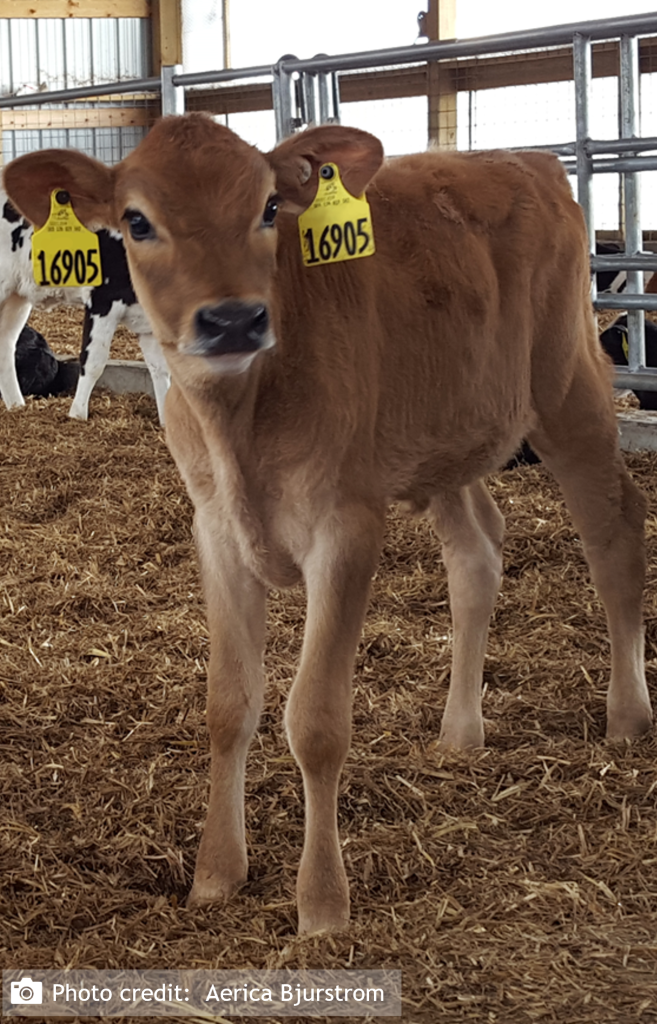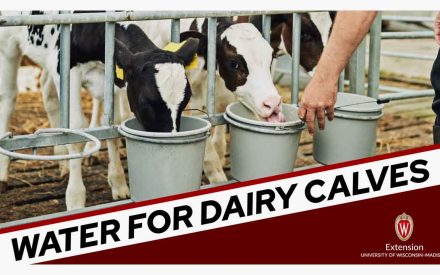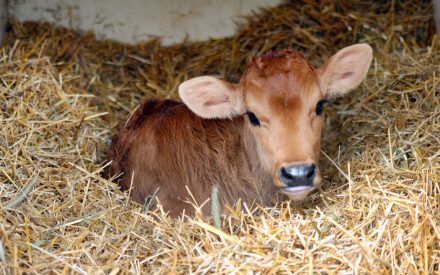Winter weather brings new challenges for completing chores on the farm. Calf care is no exception. Calves perform best when we acknowledge their needs change in colder weather and adjust our management accordingly.
Pre-weaned calves can be more sensitive to cold temperatures than adult cattle. The thermal neutral zone is defined as the temperature at which animals are most comfortable and do not require extra energy to maintain their normal body temperature. A newborn calf maintains its core body temperature from 500 F to 770 F, while a one-month-old calf’s thermoneutral zone is 320 F to 730 F. When environmental temperatures are outside this zone, calves will use additional energy to maintain their body temperature.
Here are a few good reminders for calf care practices to implement this winter.

Move newborns to a warm environment
Newborn calves (first 24 hours) should be moved to a warm environment to help ensure they dry off quickly and avoid chilling. Newborn calves have only 3-4% body fat and will burn through this fat reserve quickly if they remain wet and/or in a drafty area. Adequate amounts of colostrum should also be fed within the first 3 hours as it is high in fat and IgG content.
Increase calories, especially in the first three weeks after birth
Three weeks is considered an important milestone in the calf’s life because at that point they should start consuming more starter and the rumen will start functioning, in turn creating more body heat.
- Increasing the volume of milk fed to eight or more quarts per day if you are currently feeding less or increase the volume of milk fed through additional feedings during the day. Consider a feeding schedule that would include feeding earlier in the morning and later into the night to help calves through the colder nights.
- Another option to increase calories is to increase the amount of milk replacer powder at each feeding to provide additional energy. When increasing the amount of milk replacer in the same volume of water, work with you nutritionist so not to over feed solids on a DM basis which can cause digestive issues.
- Check the fat composition of milk replacer. Switching to a higher fat content (20%) or adding a supplement may help in winter months. Feeding whole milk during this time can achieve the same affect.
- Offer warm water after feeding milk. Consuming water warm instead of cold helps conserve the calf’s energy. While we most commonly associate dehydration with hot weather, it can also occur in cold weather.
Feed milk at the calf’s body temperature, 101-1050 F
In cold weather, the initial temperature may need to be adjusted to ensure it’s still at 101-1050 F when it arrives at the calf for feeding.
Provide lots of dry, clean bedding
Deep bedding can act as insulation, allowing calves to nest down in it to conserve heat It also serves as a barrier to the cold ground and to any fluids (milk, water, urine, etc.) seeping through the bedding. Calf blankets are not a substitute for bedding, but can provide an additional beneficial layer of warmth.
Delay weaning during extreme cold events
Try not to create extra stress on calves during extreme cold.
Provide ventilation while minimizing draft
Don’t kill calves with kindness by closing off fresh air in hopes of conserving more heat in the housing area. This will only create an environment for pathogens to breed and spread.
Winter calf care is extremely important to ensure a successful future herd.
References:
Barrett, Kathy, and Jerry Bertoldo. “Baby, it’s cold outside! Winter calf care.” (2018). https://ecommons.cornell.edu/handle/1813/60452
Bentley, Jennifer. “Don’t leave your calves out in the cold this winter, strategies for cold weather care.” https://www.extension.iastate.edu/dairyteam/files/page/files/strategies_for_cold_weather_calf_care.pdf
Lago, A., et al. “Calf respiratory disease and pen microenvironments in naturally ventilated calf barns in winter.” Journal of dairy science 89.10 (2006): 4014-4025.Salfer, James. “Raising calves that thrive in the winter.” (2019). https://extension.umn.edu/dairy-news/raising-calves-thrive-winter

 The importance of water for dairy calves
The importance of water for dairy calves Heifer blueprint: Best practices for biosecurity
Heifer blueprint: Best practices for biosecurity Heifer Blueprint: Best practices for health management
Heifer Blueprint: Best practices for health management


